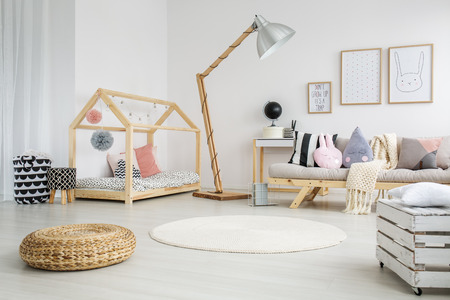Interior design trends come and go, but pastel colors have been a staple in home decor since the 1950’s. For years, such colors have been restricted to nurseries and kid’s room; however, in recent years, pastel palettes have been extended to other areas of the home because of the sophistication and elegance that they add to a space. While lavender and baby blues may not provide the same intensity as dark and more vibrant tones, it still packs a powerful punch. If you are still hesitant on the idea of incorporating pastels, we have created a how-to guide for you to use. Let’s take a look!
You may be wondering, how can you incorporate such spring-inspired colors without creating a design that’s too dainty and sweet? You can prevent pastels from becoming too feminine by combining these hues with grounding neutrals. For instance, in a living room with pastel blue walls and turquoise pillows, you can use natural materials such as a matte wooden coffee table, or burlap pillows to “intensify” the soft colors. Darker surfaces such as hardwood and dark countertops balance the two color spectrum and add a more masculine edge.
The great thing about pastel colors is that they can also be used on the walls without overwhelming your decor. Lighter pastel shades, when used as a wall color, can make a room appear larger and feel airy. These colors can serve as a backdrop for saturated pastel tones allowing you to experiment with other contrasting colors.
When using pastel colors, you really have to decide at the beginning what type of mood you desire to create. If you want a more traditional living room with pastel tones, you should include a lot of neutral accents. A light blue wall color with a white sofa and ruffled ottoman will give you that classic feel. Bathrooms, bedrooms and living rooms are ideal areas for softer pastel colored textiles and decorative accessories.
Pastels colors are really versatile. They easily blend with wood paneling, hardwood floors, seagrass, and other natural materials. To better blend the two tones, consider lighter colored woods such as light maple, bamboo, and white oak. For peach and pink pastel hues, you can pair them with cherry, mahogany and other darker stains of wood for a beautiful contrast.
We hope you enjoyed these tips and tricks! Please let us know what you think in the comment section.


Leave a Reply